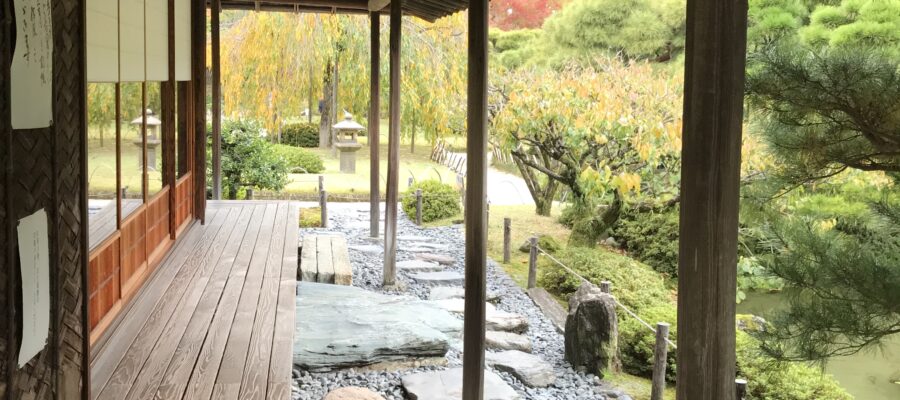中根金作が作庭した楽水苑
城南宮には神苑があり、楽水苑と呼ばれています。昭和の天才造園家である中根金作が作庭しました。この庭には四季折々の美しい花が植えられており、源氏物語に描かれた木々が80種余りあるため、「源氏物語 花の庭」として親しまれています。
春の山・平安の庭
神苑の入口から入って歩いていくと、最初に「春の山」と呼ばれる場所に着きます。しだれ梅やツバキが植えられているエリアで、私が訪れた11月には何も咲いていませんでしたが、しだれ梅の枝が何本も長く垂れ下がっていました。
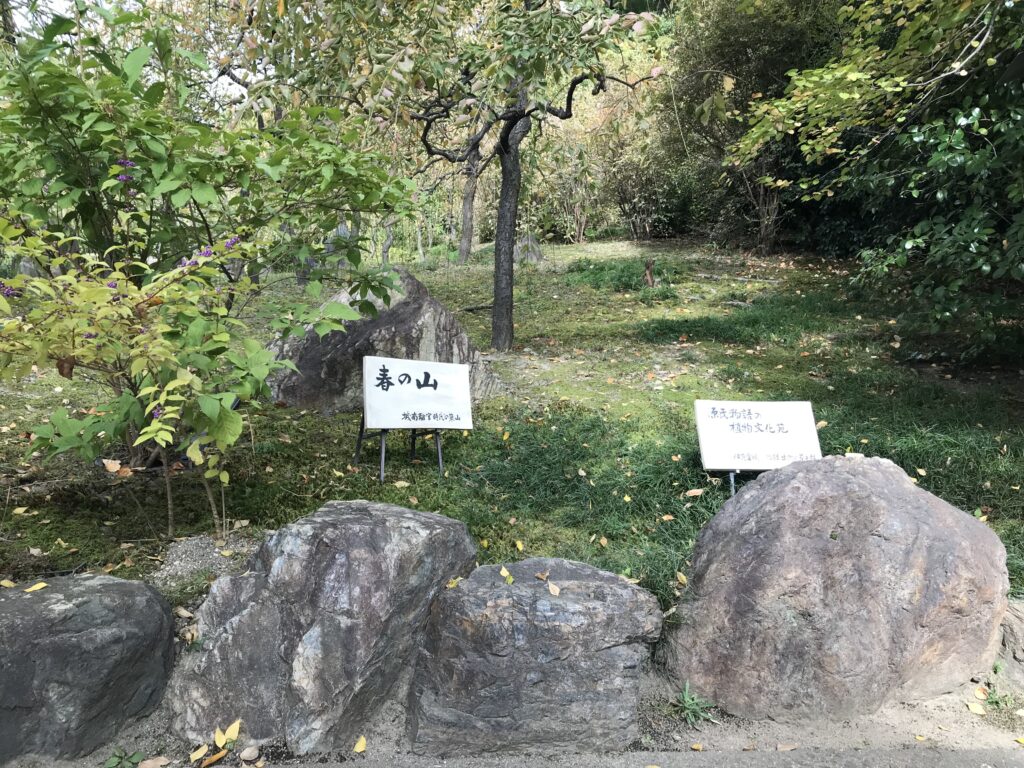
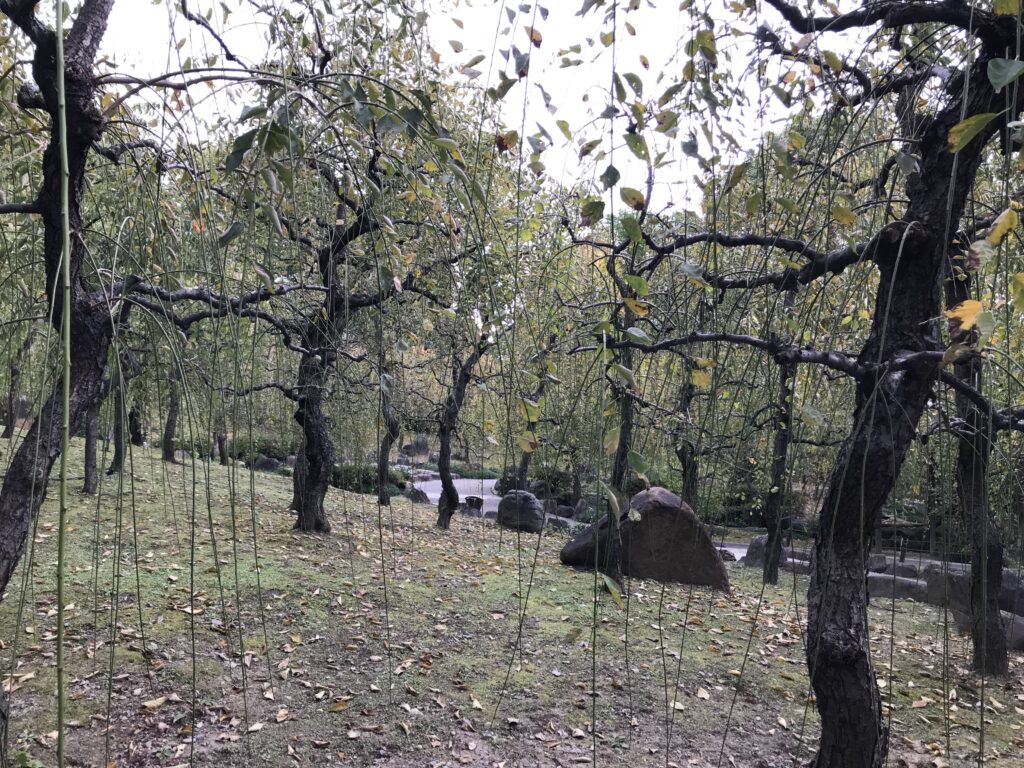
“春の山”を抜けると、中央に中之島がある池を中心とした“平安の庭”に入ります。池の横には遣水(小川)が流れていて、王朝の雅を偲ばせる曲水の宴が行われる苔の庭が広がっています。桔梗や萩が植えられていて秋に咲くそうで、何本かの桔梗の花を見つけました。
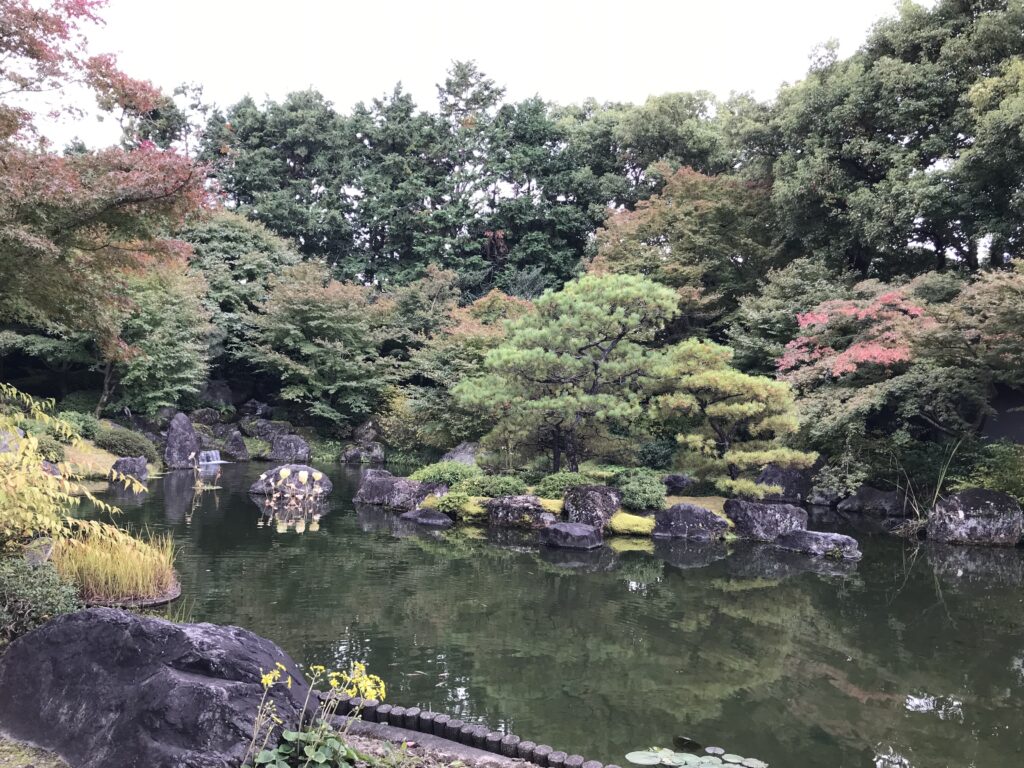
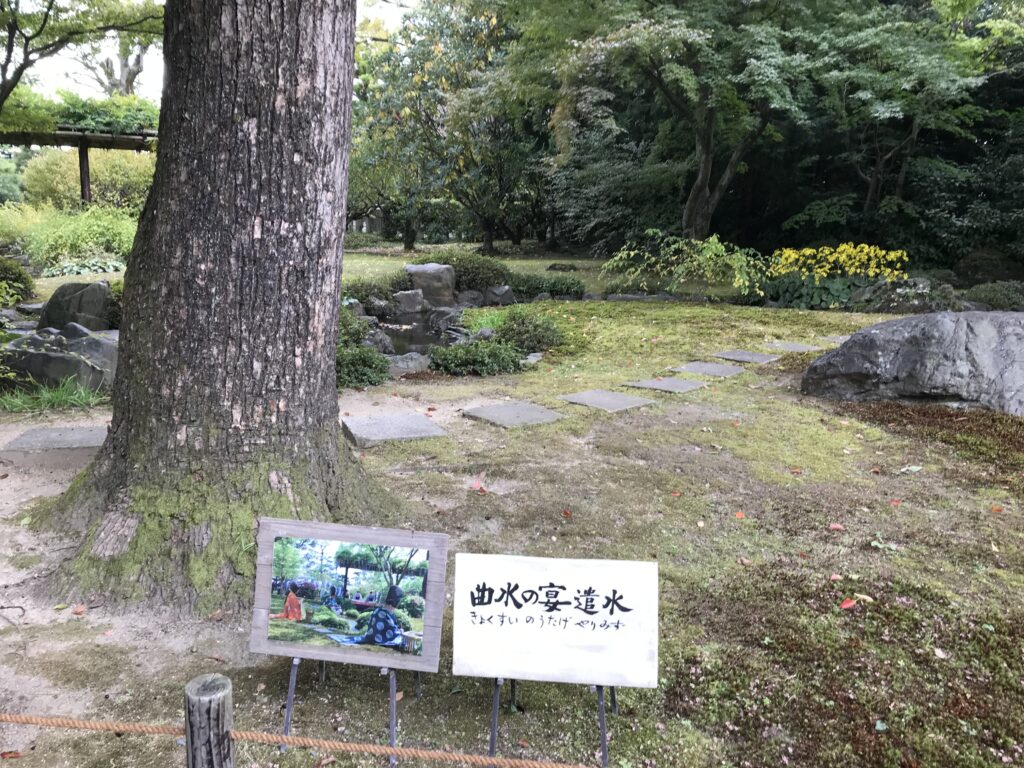
室町の庭・桃山の庭・城南離宮の庭
次に、時代が下って室町の庭に到着します。茶道、生け花、能楽などの日本文化が大成された室町時代を表すように、池の横には茶亭が建っています。池には錦鯉が泳いでいて、少し早く紅葉した木も見ることができました。
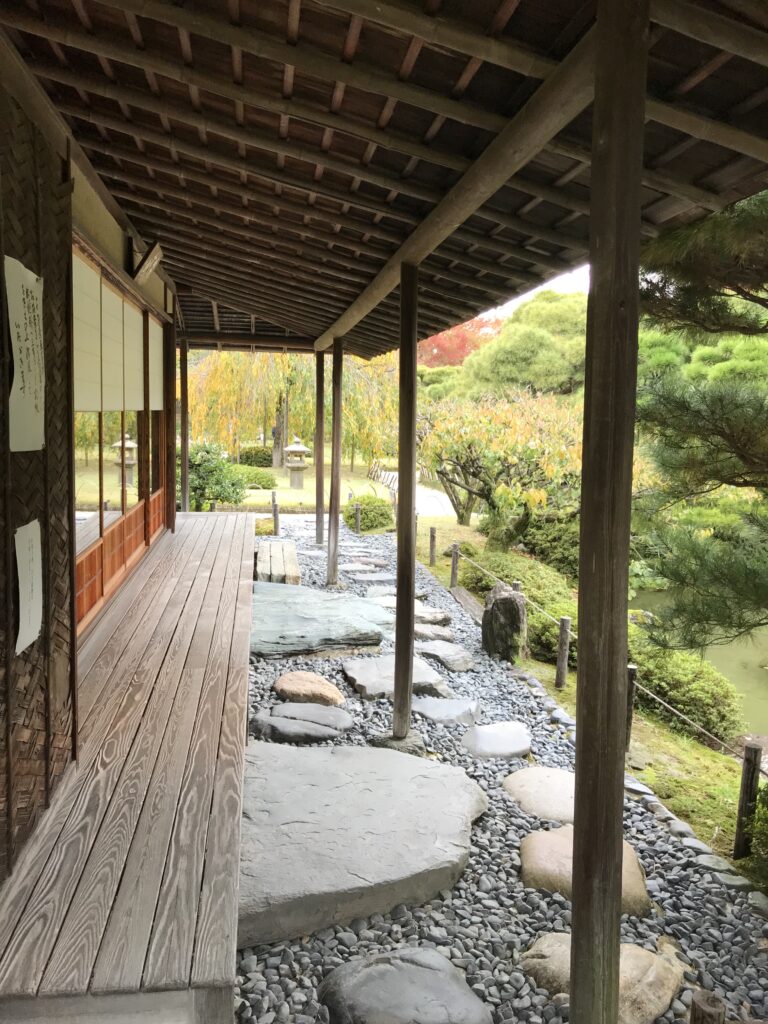
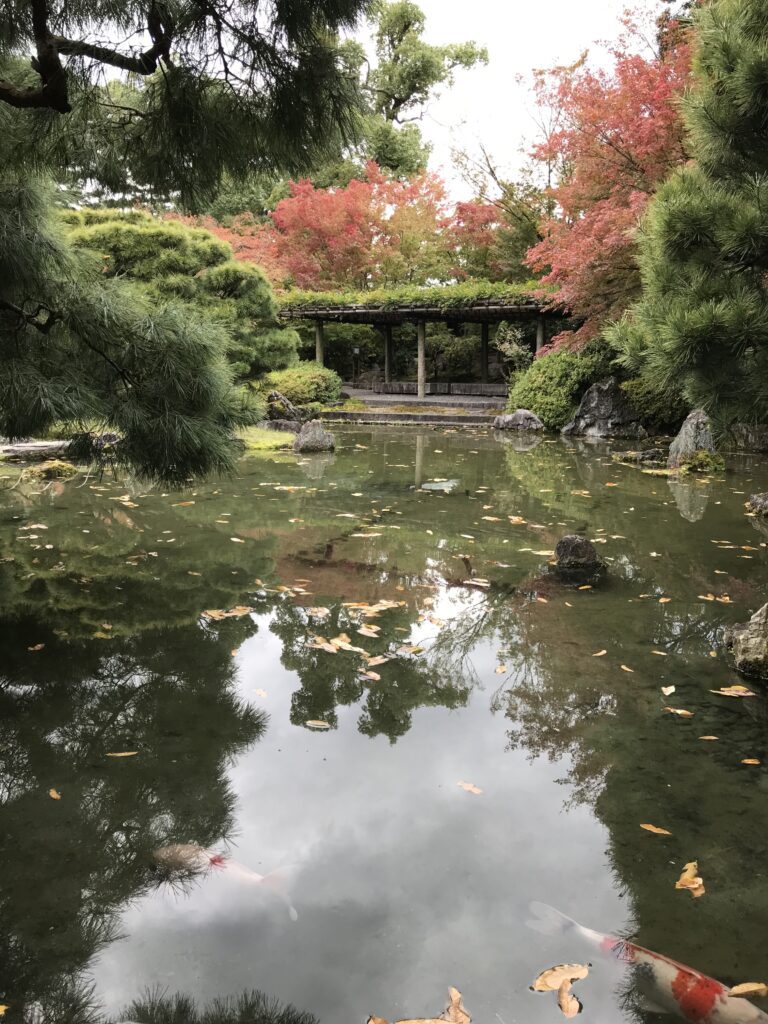
この室町の庭と小道を挟んで横に並んでいるのが桃山の庭です。芝生が植えられた枯山水の庭ですので、随分シンプルな感じがします。南蛮貿易の時代を象徴しているので、ソテツも植えられています。ソテツは当時、薩摩から送られて来ていたと思います。
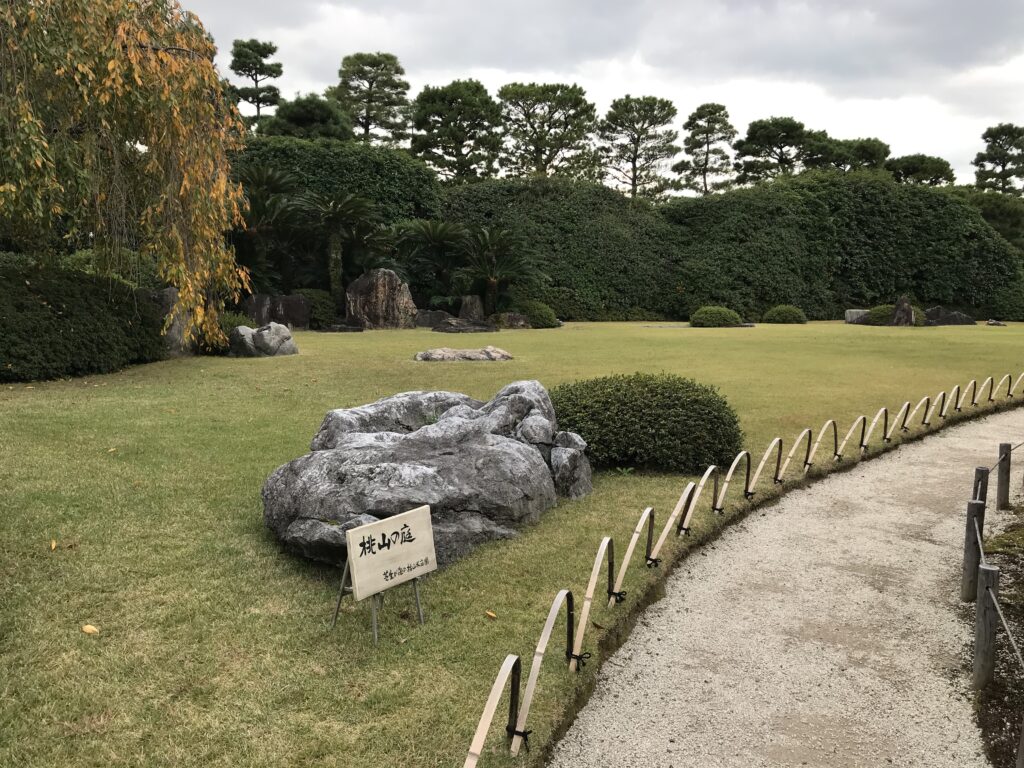
最期は城南離宮の庭です。平らな石を敷いた苑路が鴨川を、また敷かれている白い石は池を表現していて、所々にある石組みは殿舎を表しているそうです。社殿を取り囲むように5つの庭を巡ることができます。平日の昼間でしたので、これらの庭を独り占めすることができ、ぜいたくな時間を過ごすことができました。(完)
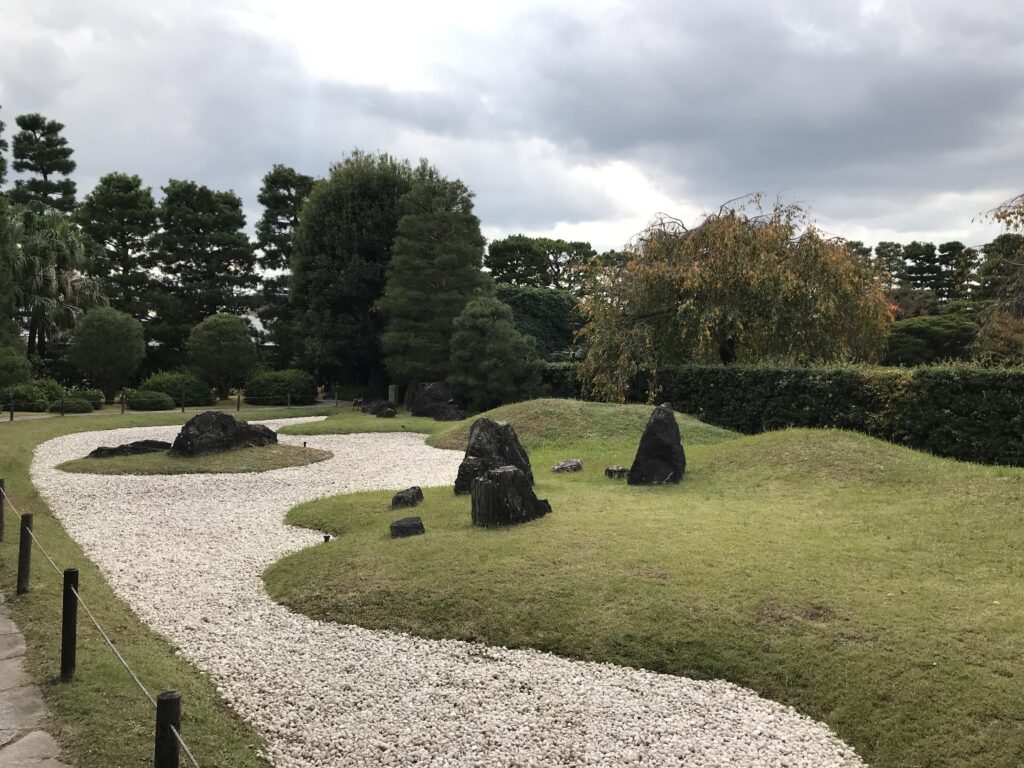
京都の教科書
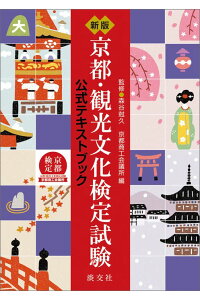
新版 京都・観光文化 検定試験 公式テキストブック 公式テキストブック [ 京都商工会議所 ]
価格:2,420円
(2021/9/11 14:06時点)
感想(5件)
Jonan Shrine (2) Shinen Garden
Rakusuien, a garden created by Kinsaku Nakane
Jounangu shrine has a Shinto garden, called Rakusuien. The garden was created by Kinsaku Nakane, a genius landscape architect of the Showa period. This garden is planted with beautiful seasonal flowers and is known as the “Tale of Genji Flower Garden” because of the more than 80 species of trees depicted in the Tale of Genji.
Spring Mountain, Heian Garden
Entering and walking through the entrance to the Shinto garden, one first arrives at a place called “Spring Mountain”. This is an area where weeping plum trees and camellias are planted. Nothing was in bloom in November when I visited, but there were several long drooping branches of weeping plum trees.
After passing through “Spring Mountain,” you will enter the “Heian-no-niwa” garden, which is centered around a pond with Nakanoshima Island in the center. Next to the pond, a stream flows through a moss garden where a kyokusui banquet is held, reminiscent of the elegance of the Heian period (794-1192). There are bellflowers and hagi (bush clovers) planted in the garden, which bloom in the fall. I found several bellflowers.
Muromachi Garden, Momoyama Garden, Jonan Detached Palace Garden
Next, I move down in time to the Muromachi Garden. As if to represent the Muromachi period, when Japanese culture such as tea ceremony, ikebana (flower arrangement), and Noh drama were greatly developed, a tea pavilion stands next to the pond. Nishikigoi carp were swimming in the pond, and I could also see trees with slightly early-autumn leaves.
Located side by side across the path from this Muromachi garden is the Momoyama garden. It is a dry landscape garden with lawn planted, so it looks quite simple. Sycamores are also planted in the garden, as it symbolizes the era of the Nanban trade. I believe that cycads were sent from Satsuma at that time.
The last is the garden of Jonan Detached Palace. The flat stone paths represent the Kamo River, the white stones represent a pond, and the masonry in various places represents a palace building. Visitors can tour the five gardens surrounding the shrine building. Since it was a weekday afternoon, I was able to enjoy the luxury of having these gardens all to myself. (End)
Sanctuaire Jonan (2) Jardin Shinen
Rakusuien, un jardin créé par Kinsaku Nakane
Le sanctuaire Jounangu possède un jardin shinto, appelé Rakusuien. Ce jardin a été créé par Kinsaku Nakane, un architecte paysagiste de génie de la période Showa. Ce jardin est planté de magnifiques fleurs de saison et est connu sous le nom de “jardin des fleurs du conte de Genji” en raison des plus de 80 espèces d’arbres représentées dans le conte de Genji.
Montagne Spring, Jardin Heian
En entrant et en traversant l’entrée du jardin shinto, on arrive d’abord à un endroit appelé “Spring Mountain”. C’est une zone où sont plantés des pruniers pleureurs et des camélias. Rien n’était en fleurs en novembre lors de ma visite, mais il y avait plusieurs longues branches tombantes de pruniers pleureurs.
Après avoir traversé la “Spring Mountain”, vous entrerez dans le jardin “Heian-no-niwa”, qui est centré autour d’un étang avec l’île de Nakanoshima au centre. À côté de l’étang, un ruisseau traverse un jardin de mousse où se tient un banquet kyokusui, rappelant l’élégance de la période Heian (794-1192). Des campanules et des hagi (trèfles en buisson) sont plantés dans le jardin, qui fleurissent à l’automne. J’ai trouvé plusieurs campanules.
Jardin de Muromachi, Jardin de Momoyama, Jardin du Palais détaché de Jonan
Ensuite, je descends dans le temps jusqu’au jardin Muromachi. Comme s’il s’agissait d’une représentation de la période Muromachi, lorsque la culture japonaise, comme la cérémonie du thé, l’ikebana (arrangement floral) et le théâtre nô, était très développée, un pavillon de thé se trouve près de l’étang. Des carpes nishikigoi nageaient dans l’étang, et je pouvais également voir des arbres aux feuilles légèrement précoces.
Le jardin Momoyama est situé côte à côte, de l’autre côté du chemin, en face du jardin Muromachi. Il s’agit d’un jardin paysager sec planté de pelouse, ce qui lui donne un aspect assez simple. Des sycomores sont également plantés dans le jardin, car ils symbolisent l’époque du commerce Nanban. Je crois que les cycadales étaient envoyées de Satsuma à cette époque.
Le dernier est le jardin du palais détaché de Jonan. Les chemins de pierres plates représentent la rivière Kamo, les pierres blanches représentent un étang, et la maçonnerie à divers endroits représente un bâtiment du palais. Les visiteurs peuvent visiter les cinq jardins qui entourent le bâtiment du sanctuaire. Comme c’était un après-midi de semaine, j’ai pu profiter du luxe d’avoir ces jardins pour moi tout seul. (Fin)
